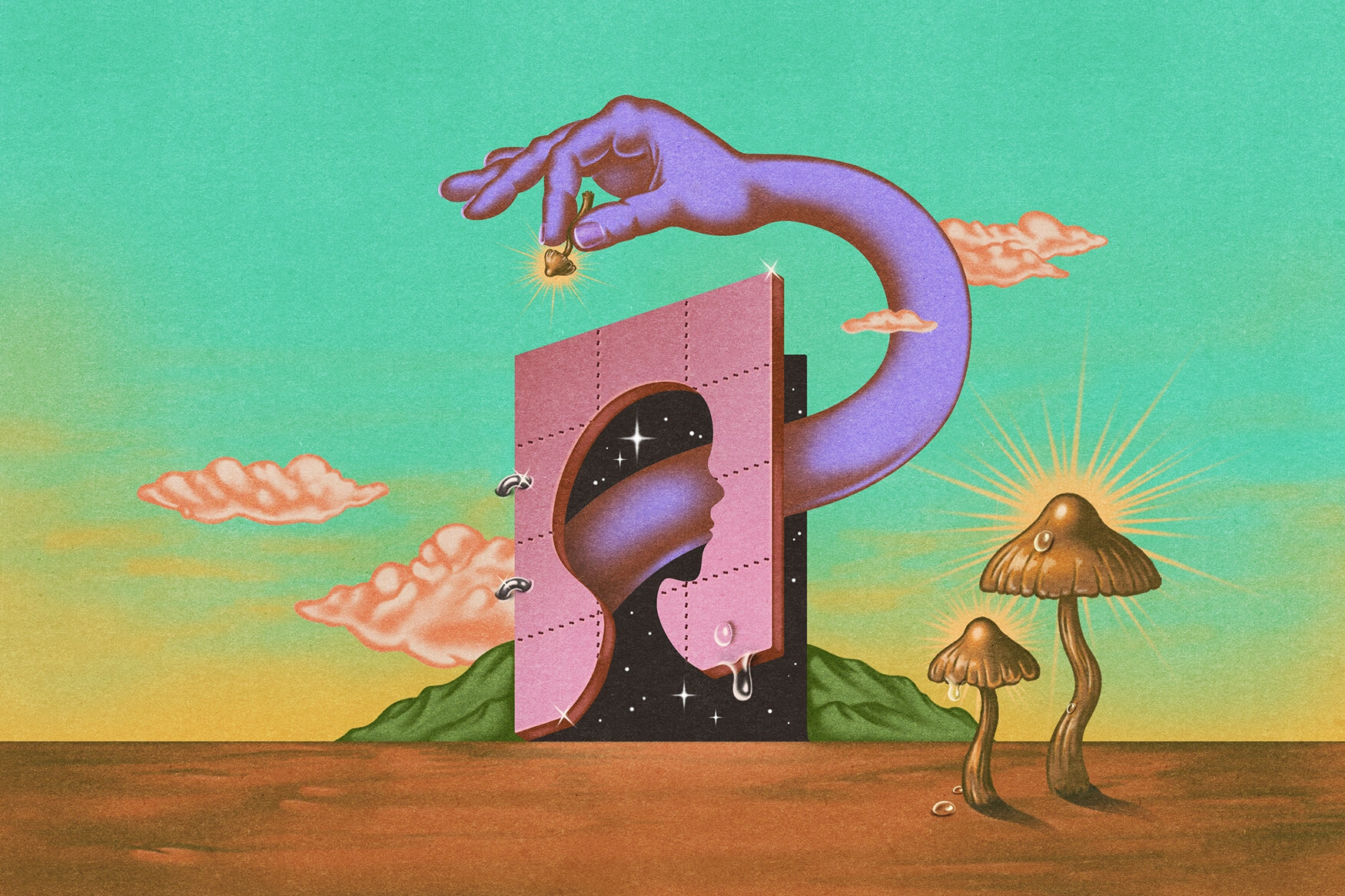Microdosing refers to the practice of taking very small, sub-perceptual doses of psychedelic substances such as LSD, psilocybin (magic mushrooms), or other compounds like ketamine, with the aim of enhancing mood, focus, and mental clarity without inducing a full psychedelic experience. While this practice has gained popularity through anecdotal reports and cultural trends, particularly in creative and tech communities, scientific research on its efficacy and safety is still in early stages.
This overview is based on the 2024 article from Medical News Today, which summarizes the current understanding of microdosing’s potential benefits and risks.
What Is Microdosing?
Microdosing involves consuming a very small fraction of a typical hallucinogenic dose, usually about 1/10 to 1/20 of a standard recreational dose. For example:
- LSD: ~5–10 micrograms
- Psilocybin: ~0.1–0.3 grams (dried mushrooms)
- Ketamine (in emerging protocols): low sublingual or oral doses well below anesthetic or therapeutic levels
Microdoses are typically taken every few days in scheduled cycles (e.g., one day on, two days off) rather than daily.
Commonly Reported Benefits
While not all benefits are scientifically confirmed, users commonly report:
1. Improved Mood and Emotional Stability
- Reduced symptoms of depression or anxiety
- Enhanced positivity and resilience
2. Increased Focus and Productivity
- Sharper concentration and sustained attention
- Greater ease with creative problem-solving
3. Better Emotional Insight and Self-Awareness
- Enhanced introspection without overwhelming intensity
- Heightened emotional intelligence in social settings
4. Physical Benefits (Anecdotal)
- Increased energy and motivation
- Reduced migraine frequency (in some reports)
However, it’s important to note that most of this evidence is anecdotal or based on small-scale observational studies. Double-blind, placebo-controlled trials are still limited.
Potential Risks and Concerns
Microdosing is not risk-free. Some potential concerns include:
1. Psychological Side Effects
- Increased anxiety or agitation in sensitive individuals
- Insomnia or restlessness
- Mood swings, especially in those with bipolar disorder
2. Unknown Long-Term Effects
- No long-term safety data for repeated microdosing over months or years
- Concerns about neurological overstimulation or psychological dependence
3. Legal and Regulatory Issues
- Most psychedelics are classified as Schedule I substances in many countries
- Legal risks vary by location and substance
4. Interactions with Other Medications
- Possible contraindications with SSRIs, MAOIs, and other psychiatric medications
Microdosing vs. Full-Dose Psychedelic Therapy
 Unlike guided psychedelic-assisted therapy sessions with full doses and clinical support, microdosing:
Unlike guided psychedelic-assisted therapy sessions with full doses and clinical support, microdosing:
- Does not produce hallucinations or ego dissolution
- Is not supervised in most cases
- Is intended for daily functioning and performance enhancement, not profound inner exploration
However, this also means that microdosing is less studied, less regulated, and more prone to inconsistent outcomes.
Current Research and Scientific Outlook
Recent studies and trials are beginning to assess:
- Placebo-controlled outcomes in mood, cognition, and creativity
- Neurobiological mechanisms (e.g., serotonin receptor activity, BDNF expression)
- Microdosing protocols for ketamine and other non-classical psychedelics
Institutions in Canada, the UK, and the U.S. have launched pilot trials, but results remain mixed, with some showing modest benefits and others showing no significant differences from placebo.
Who Might Consider Microdosing (and Who Shouldn’t)
Potential Candidates:
- Adults with mild anxiety, low mood, or creative blocks
- People with prior psychedelic experience seeking enhancement rather than healing
Not Recommended For:
- Individuals with a history of psychosis or schizophrenia
- Those on medication for bipolar disorder or seizures
- Pregnant or breastfeeding individuals
- Anyone under legal or occupational drug use restrictions
Practical Tips (If Legal and Safe)
- Start with the lowest effective dose
- Keep a journal to track mood, productivity, and side effects
- Avoid combining with other psychoactive substances or alcohol
- Adhere to a non-daily schedule to prevent tolerance
Final Thoughts
Microdosing is a promising but still experimental approach to improving well-being, creativity, and emotional health. While early anecdotal and preliminary evidence is intriguing, more rigorous scientific research is needed to fully understand its effects, risks, and long-term safety.
If you’re considering microdosing, consult a healthcare provider and review local laws. As psychedelic science advances, microdosing may one day become a legitimate, accessible mental health tool — but we’re not quite there yet.
Reference
Medical News Today (2024). Microdosing: Definition, Benefits, and Risks. medicalnewstoday.com




